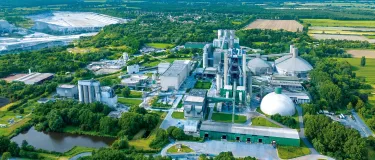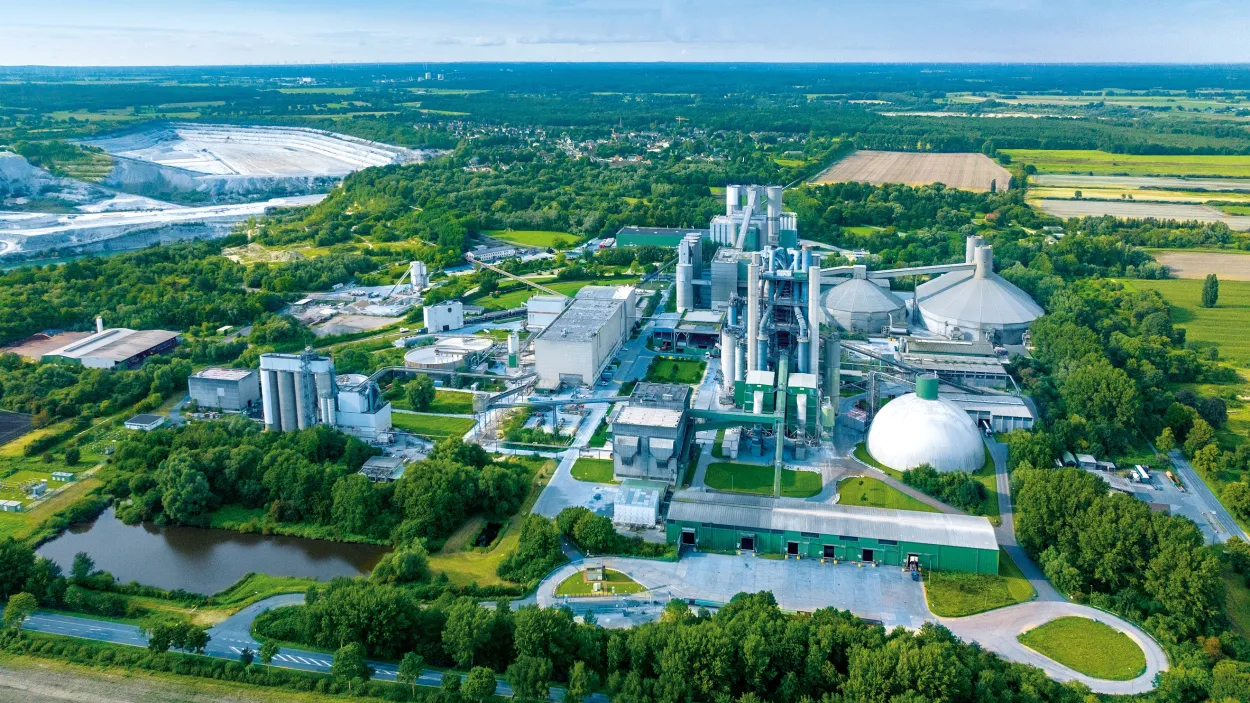How can sustainable finance decarbonize the building sector?
Sustainability is at the heart of Holcim’s strategy, and finance is no exception. For the construction and real estate sector, sustainable finance is a key factor in the transformation of industries to become more sustainable.
We recently updated our Sustainability-Linked Financing Framework into a Sustainable Finance Framework, which will enable the issuance of green finance instruments alongside sustainability-linked instruments with our climate goals.
So what exactly is sustainable and green finance, how can it decarbonize building, and how is Holcim approaching this topic? Leila Sassi, Head of Sustainable Finance at Holcim, explains.
What are the concepts of sustainable finance and green finance?
Sustainable finance is a financial approach that integrates environmental, social and governance (ESG) criteria into investment decisions and financing activities. The aim of sustainable finance is to support sustainable growth while reducing pressures on the environment to help reach a net-zero world by channelling capital into climate-friendly projects (green finance) or into projects which will help transition to a climate-neutral economy.
According to the EU and other institutions, sustainable finance will be key to transitioning towards a low-carbon, more resource-efficient and sustainable economy.
Why is sustainable finance essential to decarbonizing how the world builds?

Sustainable finance plays a crucial role in decarbonizing the construction industry by providing the necessary capital, incentives and frameworks. This is essential for mitigating climate change and transitioning to a more sustainable and resilient built environment. I’ll share some examples.
Firstly, sustainable finance encourages the development and adoption of sustainable construction solutions and technologies. This includes innovations such as Holcim’s low-carbon cement ECOPlanet or our low-carbon concrete ECOPact, as well as our proprietary ECOCycle® recycling technology platform. These advancements contribute to lower emissions related to the construction and operation of buildings.
Secondly, sustainable finance can incentivize the construction of energy-efficient buildings through green building standards and financing options. Energy-efficient buildings use less energy for heating, cooling and other operational needs, which reduces their carbon footprint over their lifespan.
Lastly, governments and regulatory bodies are implementing policies through carbon pricing mechanisms and incentives to promote sustainable construction and business practices, thereby reducing carbon emissions. Sustainable finance can help businesses and projects comply with these regulations and access financial incentives – as we did at Holcim with the development of carbon capture investments partially funded through the EU Innovation Fund in order to capture the remaining CO2 emissions from our operations in Europe.
Green bonds, sustainability-linked bonds, etc. – what are the different instruments available to companies like Holcim to decarbonize their operations?
A green bond has a dedicated use of proceeds, i.e. the funds raised are directed to green projects, while a sustainability-linked bond links partially the cost of the bond to the achievement of sustainability targets. If the target is achieved the cost of the bond remains unchanged, if the target is not met, the cost of the bond will increase. The two instruments complement each other very well and are available to Holcim.
How is Holcim approaching the topic of sustainable finance?
Holcim has a holistic approach to sustainable finance: it is fully integrated in its funding activity as well as in its investment strategy and reporting. Our company committed to reach at least 40% of sustainable financing by 2025 and, within the same time frame, to reach 500 million CHF of Green CAPEX per year and to invest 2 billion CHF in carbon capture technology by 2030. In addition, Holcim follows the EU Taxonomy reporting and reported in 2023 its eligible activities in the 2022 Annual Report. Our Sustainable Performance Report follows the guidelines of the Task-Force for Climate Disclosures (TCFD) and Global Reporting Initiative (GRI).
What are some of the key achievements when it comes to sustainable finance at Holcim?
In terms of sustainable financing, Holcim was a pioneer in the industry. We were the first company in the sector to successfully issue sustainability-linked bonds and the 5th company to do so worldwide. As of today, the group has more than 7 billion CHF of financing agreements linked to our sustainability objectives.
Recognizing the important role of sustainable finance in supporting the transition to a low-carbon economy, we have recently updated our financing framework into a sustainable finance framework allowing us to issue green bonds alongside sustainability-linked bonds to help us work towards our more ambitious climate goals.
Our framework will further support transparency and accountability with regards to the Group’s environmental impacts and sustainability strategy vis-à-vis our investors, banks and other stakeholders in the market and society.
Finally, at Holcim we are honored to be part of the CFO Coalition launched by the UN Global Compact to accelerate corporate finance actions and investments toward the realization of the SDGs.



































